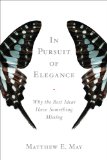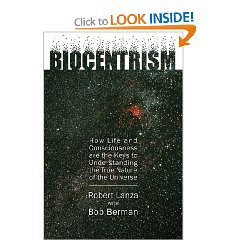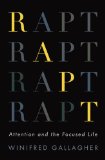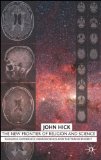May 30, 2009

The Spiritual Anatomy of Emotion: How Feelings Link the Brain, the Body, and the Sixth Sense by Michael Jawer with Dr. Marc Micozzi (Park Street Press/Inner Traditions, 2009)
Product description from the publisher:
A cutting-edge examination of feelings, not thoughts, as the gateway to understanding consciousness
• Contends that emotion is the greatest influence on personality development
• Offers a new perspective on immunity, stress, and psychosomatic conditions
• Explains how emotion is key to understanding out-of-body experience, apparitions, and other anomalous perceptions
Contemporary science holds that the brain rules the body and generates all our feelings and perceptions. Michael Jawer and Dr. Marc Micozzi disagree. They contend that it is our feelings that underlie our conscious selves and determine what we think and how we conduct our lives.
The less consciousness we have of our emotional being, the more physical disturbances we are likely to have–from ailments such as migraines, fibromyalgia, chronic fatigue, and post-traumatic stress to anomalous perceptions such as apparitions and involuntary out-of-body experiences. Using the latest scientific research on immunity, sensation, stress, cognition, and emotional expression, the authors demonstrate that the way we process our feelings provides a key to who is most likely to experience these phenomena and why. They explain that emotion is a portal into the world of extraordinary perception, and they provide the studies that validate the science behind telepathic dreams, poltergeists, and ESP. The Spiritual Anatomy of Emotion challenges the prevailing belief that the brain must necessarily rule the body. Far from being by-products of neurochemistry, the authors show that emotions are the key vehicle by which we can understand ourselves and our interactions with the world around us as well as our most intriguing–and perennially baffling–experiences.
See also: Website for the book for excerpts and more…
Comments (0)
- consciousness,psychology
May 19, 2009

In Pursuit of Elegance: Why the Best Ideas Have Something Missing by Matthew May (Broadway Business, 2009)
Product description from the publisher:
What made the Sopranos finale one of the most-talked-about events in television history?
Why is sudoku so addictive and the iPhone so irresistible?
What do Jackson Pollock and Lance Armstrong have in common with theoretical physicists and Buddhist monks?
Elegance.
In this thought-provoking exploration of why certain events, products, and people capture our attention and imaginations, Matthew E. May examines the elusive element behind so many innovative breakthroughs in fields ranging from physics and marketing to design and popular culture. Combining unusual simplicity and surprising power, elegance is characterized by four key elements—seduction, subtraction, symmetry, and sustainability. In a compelling, story-driven narrative that sheds light on the need for elegance in design, engineering, art, urban planning, sports, and work, May offers surprising evidence that what’s “not there” often trumps what is.
In the bestselling tradition of The Tipping Point, Made to Stick, and The Black Swan, In Pursuit of Elegance will change the way you think about the world.
See also: book website
Comments (1)
- consciousness,culture,happiness,new books,psychology,self
May 5, 2009
 by Robert Lanza and Bob Berman (Benbella Books, 2009)
by Robert Lanza and Bob Berman (Benbella Books, 2009)
Biocentrism: How Life and Consciousness Are the Keys to Understanding the True Nature of the Universe
Every now and then, a simple yet radical idea shakes the very foundations of knowledge. The startling discovery that the world was not flat challenged and ultimately changed the way people perceived themselves and their relationships with the world. For most humans of the 15th century, the notion of Earth as ball of rock was nonsense. The whole of Western natural philosophy is undergoing a sea change again, forced upon us by the experimental findings of quantum theory. At the same time, these findings have increased our doubt and uncertainty about traditional physical explanations of the universe’s genesis and structure.
Biocentrism completes this shift in worldview, turning the planet upside down again with the revolutionary view that life creates the universe instead of the other way around. In this new paradigm, life is not just an accidental byproduct of the laws of physics.
Biocentrism takes the reader on a seemingly improbable but ultimately inescapable journey through a foreign universe–our own–from the viewpoints of an acclaimed biologist and a leading astronomer. Switching perspective from physics to biology unlocks the cages in which Western science has unwittingly managed to confine itself. Biocentrism shatters the reader’s ideas of life, time and space, and even death. At the same time, it releases us from the dull worldview that life is merely the activity of an admixture of carbon and a few other elements; it suggests the exhilarating possibility that life is fundamentally immortal.
Biocentrism awakens in readers a new sense of possibility and is full of so many shocking new perspectives that the reader will never see reality the same way again.
See also: excerpt in May 2009 Discover Magazine
Author Robert Lanza’s website
Comments (0)
- consciousness,new books,reality
April 16, 2009

Rapt: Attention and the Focused Life by Winifred Gallagher (Penguin, 2009) also has a Kindle edition.
Product Description from the publisher:
Winifred Gallagher revolutionizes our understanding of attention and the creation of the interested life
In Rapt, acclaimed behavioral science writer Winifred Gallagher makes the radical argument that the quality of your life largely depends on what you choose to pay attention to and how you choose to do it. Gallagher grapples with provocative questions—Can we train our focus? What’s different about the way creative people pay attention? Why do we often zero in on the wrong factors when making big decisions, like where to move?—driving us to reconsider what we think we know about attention.
Gallagher looks beyond sound bites on our proliferating BlackBerries and the increased incidence of ADD in children to the discoveries of neuroscience and psychology and the wisdom of home truths, profoundly altering and expanding the contemporary conversation on attention and its power. Science’s major contribution to the study of attention has been the discovery that its basic mechanism is an either/or process of selection. That we focus may be a biological necessity— research now proves we can process only a little information at a time, or about 173 billion bits over an average life—but the good news is that we have much more control over our focus than we think, which gives us a remarkable yet underappreciated capacity to influence our experience. As suggested by the expression “pay attention,” this cognitive currency is a finite resource that we must learn to spend wisely. In Rapt, Gallagher introduces us to a diverse cast of characters—artists and ranchers, birders and scientists—who have learned to do just that and whose stories are profound lessons in the art of living the interested life. No matter what your quotient of wealth, looks, brains, or fame, increasing your satisfaction means focusing more on what really interests you and less on what doesn’t. In asserting its groundbreaking thesis—the wise investment of your attention is the single most important thing you can do to improve your well-being—Rapt yields fresh insights into the nature of reality and what it means to be fully alive.
Comments (0)
- cognitive science,consciousness,mind,new books
March 28, 2009

John Hick, a prominent philosopher of religion, published New Frontier of Religion and Science: Religious Experience, Neuroscience, and the Transcendent in 2006. This was one of the books cited by Mark Vernon in Wellbeing, so I decided to check it out.
Hick criticizes mind-brain identity theory and other naturalistic theories of consciousness such as epiphenomenalism and emergence, clearing the way for an approach that supports the validity of religious experience. He proposes a Kantian account that accommodates religious pluralism. One interesting idea introduced by Hick is that of levels of meaning, physical, ethical and religious, (he could also have included social/cultural) that correspond to increasing degrees of cognitive freedom, so we have the least amount of freedom in relation to physical reality, a greater amount in relation to ethics and the most freedom in relation to religious experience:
(p 145)The supra-natural … environment, whether experienced as a personal God or a transpersonal Reality is always and everywhere there to be accessed, but is not forced upon our consciousness.
This is why, from a religious point of view, experience of the Transcendent is neither universal nor uniform. It is not universal, at any given time, because it is not forced, or does not force itself, upon anyone; and it is not uniform around the world because the human contribution to the forms of authentic religious experience varies within the different cultures and traditions of the earth.
The book could have used some proofreading, as there were a number of distracting errors. Also the first section on institutional religion was a preliminary discussion that could easily be skipped over.
Readers who are open to non-naturalistic theorizing would be most likely to enjoy this book.
Comments (0)
- consciousness,philosophy of mind







